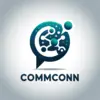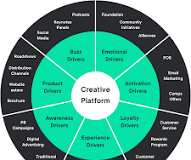The Power of Integrated Communications
In today’s fast-paced digital world, effective communication is key to success for businesses of all sizes. Integrated communications have emerged as a powerful solution that streamlines messaging across various channels, ensuring consistency and efficiency.
Integrated communications involve combining different communication tools and platforms into a unified strategy. This approach allows businesses to deliver their message cohesively across multiple channels, such as social media, email, websites, and traditional marketing channels.
By integrating communications, businesses can create a seamless experience for their audience. Whether it’s a customer receiving a promotional email and seeing a corresponding social media post or encountering consistent branding across different touchpoints, integrated communications help build brand recognition and trust.
Moreover, integrated communications enable businesses to gather valuable data and insights from various channels. By analysing the performance of different communication strategies in one consolidated view, organisations can make informed decisions to optimise their messaging and reach their target audience more effectively.
Another benefit of integrated communications is increased efficiency. By centralising communication efforts and automating processes where possible, businesses can save time and resources while ensuring that their messaging remains coherent and on-brand.
As technology continues to evolve, the importance of integrated communications will only grow. Businesses that embrace this holistic approach to communication are better positioned to engage with their audience, drive growth, and stay ahead in an increasingly competitive market.
Whether you’re a small start-up or an established enterprise, integrating your communication efforts can yield significant benefits. Explore the power of integrated communications today and unlock new opportunities for your business.
Seven Benefits of Integrated Communications for Modern Businesses
- Enhances brand consistency across multiple channels
- Improves customer engagement and experience
- Centralises communication efforts for increased efficiency
- Provides valuable insights through data analysis
- Streamlines messaging for a cohesive brand identity
- Saves time and resources by automating processes
- Helps businesses stay competitive in a rapidly evolving market
Challenges of Integrated Communications: Navigating Complexity, Cost, and Change
Enhances brand consistency across multiple channels
Integrated communications play a crucial role in enhancing brand consistency across multiple channels. By aligning messaging and branding elements across various communication platforms, businesses can establish a unified and recognisable identity. This consistency not only reinforces brand recognition but also builds trust and credibility with the audience. Whether a customer interacts with the brand through social media, email marketing, or in-person experiences, the cohesive branding delivered through integrated communications ensures a seamless and cohesive brand experience that resonates with consumers and strengthens brand loyalty.
Improves customer engagement and experience
Integrated communications play a crucial role in enhancing customer engagement and experience. By delivering consistent messages across multiple channels and touchpoints, businesses can create a seamless and personalised experience for their customers. This cohesive approach not only strengthens brand loyalty but also ensures that customers feel valued and understood. Through integrated communications, businesses can interact with their audience in a more meaningful way, building lasting relationships and driving customer satisfaction to new heights.
Centralises communication efforts for increased efficiency
One of the key advantages of integrated communications is its ability to centralise communication efforts, leading to increased efficiency. By consolidating messaging across various channels into a unified strategy, businesses can streamline their communication processes and ensure consistency in branding and messaging. This centralisation not only saves time and resources but also helps in maintaining a coherent and cohesive approach to reaching the target audience. Overall, centralising communication efforts through integrated communications enables organisations to operate more efficiently and effectively in today’s fast-paced digital landscape.
Provides valuable insights through data analysis
Integrated communications provide valuable insights through data analysis, allowing businesses to gain a comprehensive understanding of their communication strategies’ effectiveness. By consolidating data from various channels into a unified view, organisations can identify trends, track performance metrics, and make data-driven decisions to enhance their messaging and engagement with their target audience. This analytical approach not only improves the efficiency of communication efforts but also enables businesses to adapt and refine their strategies for optimal results.
Streamlines messaging for a cohesive brand identity
Integrated communications streamline messaging for a cohesive brand identity by ensuring that all communication channels convey a consistent message and branding elements. This uniformity helps reinforce brand recognition and trust among the audience, as they encounter a unified brand image across various touchpoints. By presenting a coherent message through different channels, businesses can strengthen their brand identity and establish a strong connection with their target market, ultimately enhancing their overall brand reputation and loyalty.
Saves time and resources by automating processes
Integrated communications offer a significant advantage by saving time and resources through the automation of processes. By streamlining communication efforts and automating repetitive tasks, businesses can operate more efficiently and focus their resources on other strategic initiatives. This not only increases productivity but also ensures that messaging remains consistent across various channels, ultimately enhancing the overall effectiveness of communication strategies.
Helps businesses stay competitive in a rapidly evolving market
In a rapidly evolving market landscape, the pro of integrated communications shines brightly as it helps businesses stay competitive. By adopting a unified approach to communication across various channels, organisations can effectively engage with their target audience, adapt to changing consumer preferences, and differentiate themselves from competitors. Integrated communications enable businesses to deliver consistent messaging, gather valuable insights from multiple touchpoints, and quickly adjust their strategies to meet evolving market demands. Embracing integrated communications is not just a strategy for success – it is a necessity for businesses looking to thrive in today’s dynamic and competitive market environment.
Complexity
One notable drawback of integrated communications is the inherent complexity involved in its implementation. Coordinating efforts across diverse teams and departments can be challenging, requiring meticulous planning and seamless collaboration. The need to align messaging, branding, and strategies across various channels can lead to logistical hurdles and potential conflicts if not managed effectively. Navigating this complexity demands a structured approach and clear communication to ensure that all stakeholders are on the same page and working towards a unified goal.
Cost
One significant drawback of integrated communications is the cost implications associated with setting up such systems. Implementing integrated communication solutions often requires an initial investment in technology infrastructure and employee training. This upfront expenditure can be a barrier for some businesses, especially smaller organisations with limited budgets. Additionally, ongoing maintenance and updates to keep the integrated systems running smoothly can incur additional costs over time. Despite the potential financial burden, many businesses find that the long-term benefits of streamlined communication and improved efficiency outweigh the initial investment required for integrated communications.
Data Security
One significant drawback of integrated communications is the potential risk to data security. Centralising communication channels can create a single point of vulnerability, increasing the likelihood of data breaches if adequate security measures are not implemented. Without robust encryption, access controls, and monitoring systems in place, sensitive information transmitted through integrated platforms may be at greater risk of being compromised by cyber threats. Organisations must prioritise data security when adopting integrated communication strategies to safeguard their confidential information and protect the privacy of their customers and stakeholders.
Dependency on Technology
One significant drawback of integrated communications is the dependency on technology. As businesses consolidate their communication efforts across various platforms, they become increasingly reliant on technology to execute their strategies effectively. This reliance can leave businesses vulnerable to technical glitches, system failures, or network outages, disrupting communication channels and potentially impacting customer interactions. Moreover, the rapid pace of technological advancements means that businesses must continuously adapt and update their systems to ensure seamless integration, adding complexity and potential points of failure to their communication processes.
Resistance to Change
One notable challenge of integrated communications is the resistance to change among employees. When introducing new communication methods and platforms, some employees may struggle to adapt, which can hinder the smooth implementation of integrated strategies. Resistance to change can stem from various factors, such as unfamiliarity with new technologies, fear of job displacement, or simply a preference for traditional communication methods. Addressing this resistance through comprehensive training programmes, clear communication about the benefits of integration, and providing ongoing support can help mitigate this con and facilitate a smoother transition towards integrated communications within an organisation.
Overload of Information
An inherent drawback of integrated communications is the potential overload of information that can occur when messages are disseminated across numerous channels. This flood of information runs the risk of overwhelming the audience, leading to message fatigue and decreased engagement. With multiple touchpoints bombarding individuals with content, there is a challenge in striking the right balance between delivering relevant information and avoiding saturating the audience with excessive data. Managing this conundrum effectively requires careful planning and strategising to ensure that integrated communications remain impactful without inundating recipients with an excess of information.
Tags: audience trust, automation processes, brand consistency, brand recognition, centralizing communication efforts, cohesive experience, communication tools, data insights, efficiency, email, integrated communications, messaging, multiple channels, performance analysis, platforms, social media, target audience engagement, traditional marketing channels, websites
